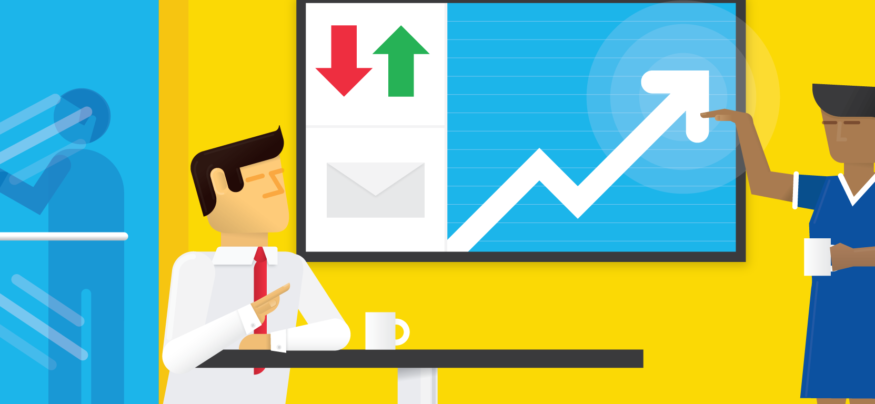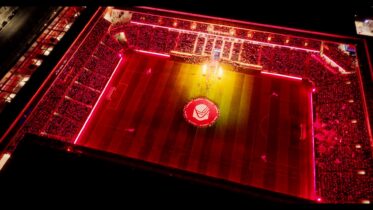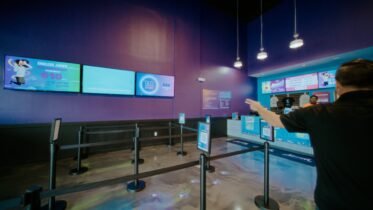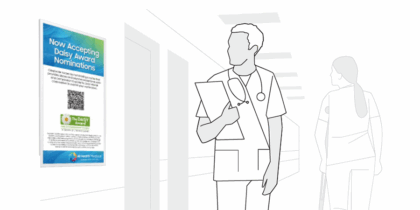Workplaces have changed dramatically in the digital age, which is having a profound effect on the way employers manage their internal communication strategy. Corporate communication is now shifting from posters and bulletin boards to digital displays and interactive stations, and technology is enabling business communications to be much more timely, targeted and effective.
Your parents and grandparents spent their working lives in environments where staff communications consisted of posters pinned on cork boards in break rooms or hallways. HR departments communicated through printed material stuffed in pay envelopes. E-mail tried to replace this printed material, but in many companies, more staff notices were sent through emails than were opened or read.
The big challenge facing many companies these days is how to execute corporate communication in blue-collar environments with hundreds or even thousands of people on manufacturing and processing floors who are constantly on the go and don’t have access to company emails, PCs or inboxes. How do you ensure that the message is in the right location at the right time, and then taken down once it’s no longer relevant?
Digital Signage Delivers the Right Messages to the Right People
Corporate communication done through networked digital displays — driven by media players or using built-in technology like Samsung’s Smart Signage — enables managers to get messages out to places where they’ll be seen, and then tune and time those messages to specific audiences and circumstances. With digital signage, information about the annual national sales planning meeting doesn’t end up in operations. Time-sensitive messages don’t stay up until someone walks around and pulls posters off of bulletin boards and walls.
When digital signage is used broadly in workplaces, it can provide the following benefits.
Advanced Performance Tracking and Visualization
Most businesses generate data on sales, production volumes, efficiency ratings, uptime, downtime and more. Now it’s easier than ever to not only access that data, but to make sense of it and present it clearly. Micro-computing, sensors and near-ubiquitous connectivity allow businesses to harvest and archive data from everything and everywhere, all due to what’s been dubbed the “Internet of Things.”
Using web technologies and content management platforms, businesses can now turn digital displays into kinetic dashboard displays that tell key staff — or all staff — what’s happening with a business right now. Predefined, automated graphics can turn sets of numbers into dynamic charts and infographics that help anyone understand, at a glance, how different processing plants are performing, what products are hot sellers, which work teams are excelling or struggling and what equipment is operating outside mechanical targets.
Staff Training
Interactive digital signage screens located behind the scenes enable HR departments to reduce scheduled classroom sessions and get new staff up to speed quickly on how to use equipment or perform other elements of their jobs. Self-directed touchscreen training allows staff to sign in, go step-by-step through procedures or information, and log out when completed. HR will be alerted when new hires have completed their training, and staff can refer back to these tools if needed.
Workplace safety is critically important for very human reasons, but also because worksite injuries contribute to lost productivity and rising healthcare and insurance costs. It’s one thing to encourage workers to be safe, and quite another to use video messages and graphics to explain risks and ways to minimize them.
Employee Motivation
A 2016 survey suggests that nearly half of business communicators know that their companies need to rethink their digital workplace communications to help boost job satisfaction. Workers want to know what’s going on, and they want to be recognized when they excel. Digital communications can effectively let workers know when big deals are closed, engineering milestones are hit or sales targets exceeded.
Texas online retailer Blinds.com has taken their internal communication strategy to new heights. Instead of simple, boring tote boards, the company is producing pro-sports-quality highlight packages for top performing sales and customer contact staff in their offices.
Improved Workplace Experiences
One of the hottest emerging use cases for digital signage in the workplace is meeting room signs, the small displays at entrances to rooms. Mapped to email calendars or room booking systems, these displays tell staff if the room is booked, who has the room and why, and future availability. Many systems have touchscreens, allowing staff to book that room or find another on the spot. Though simple, these signs end the chaos and conflict we’ve all experienced when trying to book office meeting rooms.
There’s a lot of buzz out there about smart buildings, and digital signage is a powerful tool to harvest and reflect that intelligence. The future of workplace signs will see them being contextually aware, which will greatly improve workplace productivity and efficiency.
Looking for a digital signage solution to improve workplace communications in your business? Check out our full line of products here to find what works best for your organization.








